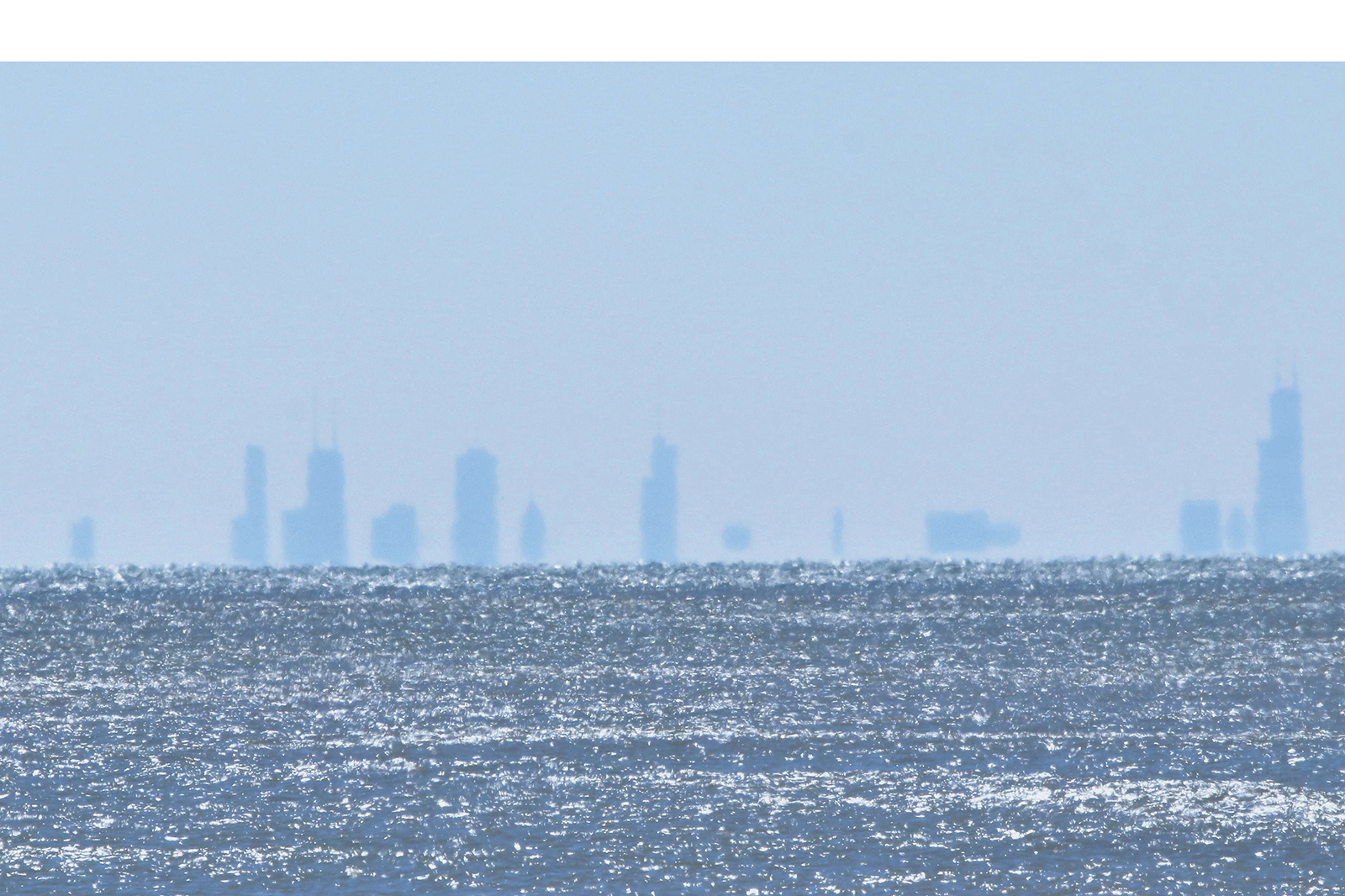In the latest Capturing Kenosha, we reveal a little-known secret about the city’s stunning views.
Did you know that despite the 50-mile distance between Kenosha and downtown Chicago, it’s possible to catch a glimpse of the Windy City’s famous skyline from the shores of Lake Michigan?
That’s right. On a clear day, the tops of Chicago’s towering skyscrapers can be seen jutting out above the horizon line, defying the notion that such a distance is too great for the naked eye to perceive.
But how is this possible?
Let’s delve into the science and mystery behind this fascinating phenomenon.
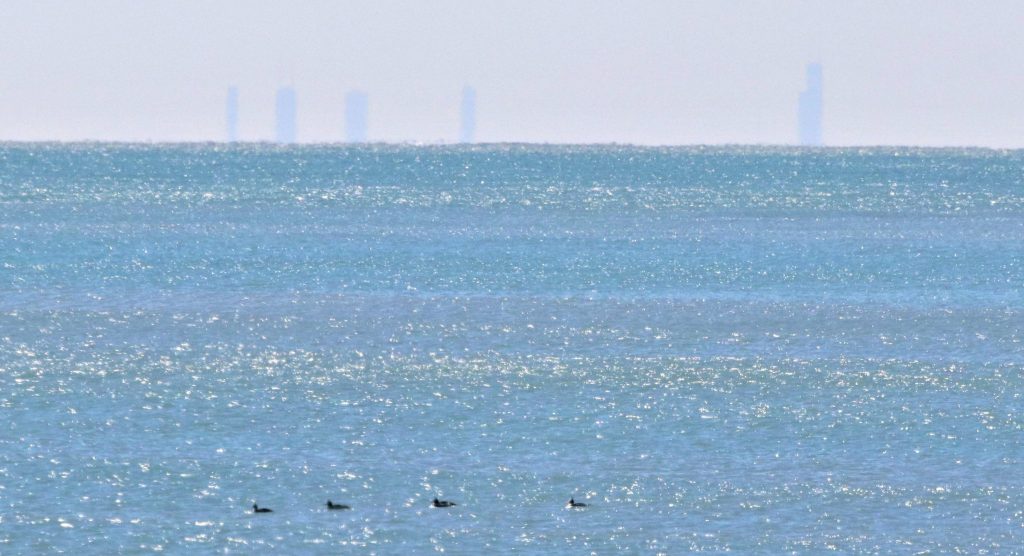
PHOTO: THOMAS CORRAO
Kenosha is known for its beautiful views of Lake Michigan and its surrounding landscapes. However, one phenomenon that has puzzled residents and visitors alike is the ability to see the tops of the buildings in the Chicago skyline on clear days, even though they are over 50 miles away.
From the shores of Kenosha, the Chicago skyline, when visible, appears to be out over the open water of Lake Michigan to the east, rather than directly south of Kenosha, as shown on a physical map.
This is due to the way the Earth’s surface curves, causing the line of sight from Kenosha to be slightly angled upward. This means that from Kenosha, the Chicago skyline appears to be located farther east than it is, giving the illusion that it is over the open water of Lake Michigan.

PHOTO: THOMAS CORRAO
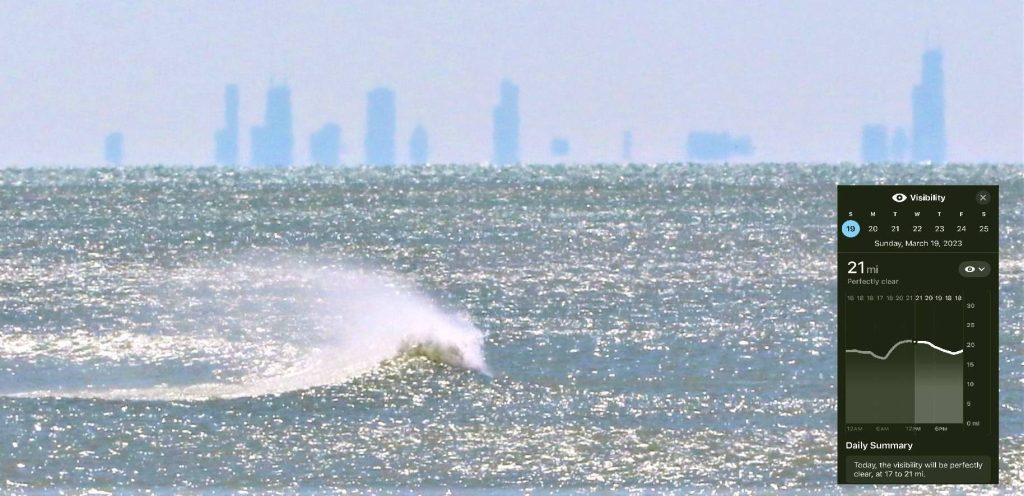
PHOTO: THOMAS CORRAO
Another factor that can contribute to this phenomenon is the refraction of light in the Earth’s atmosphere. Refraction occurs when light passes through different mediums, such as air with different temperatures or densities. The result can be a bending of the light’s path, which can cause objects to appear higher or lower than they are.
This effect can be especially pronounced over bodies of water, where there may be large temperature differences between the surface of the water and the air above it.
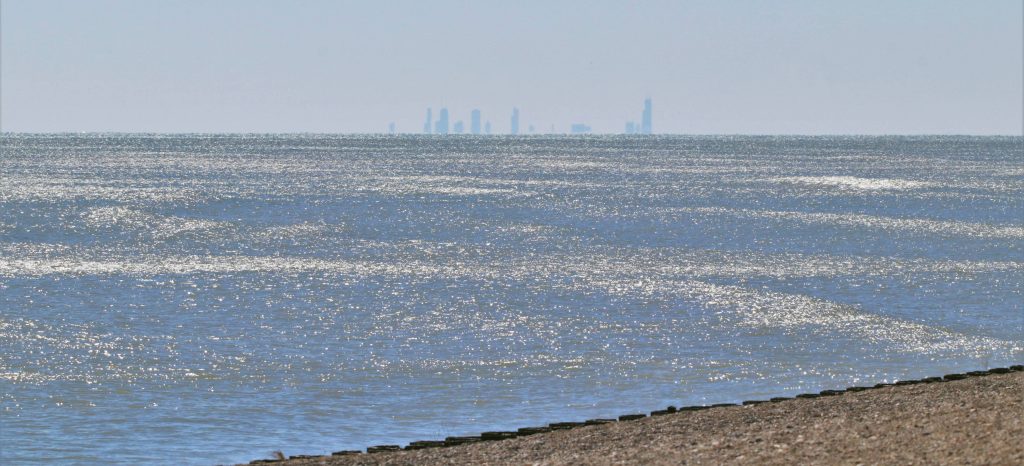
PHOTO: THOMAS CORRAO
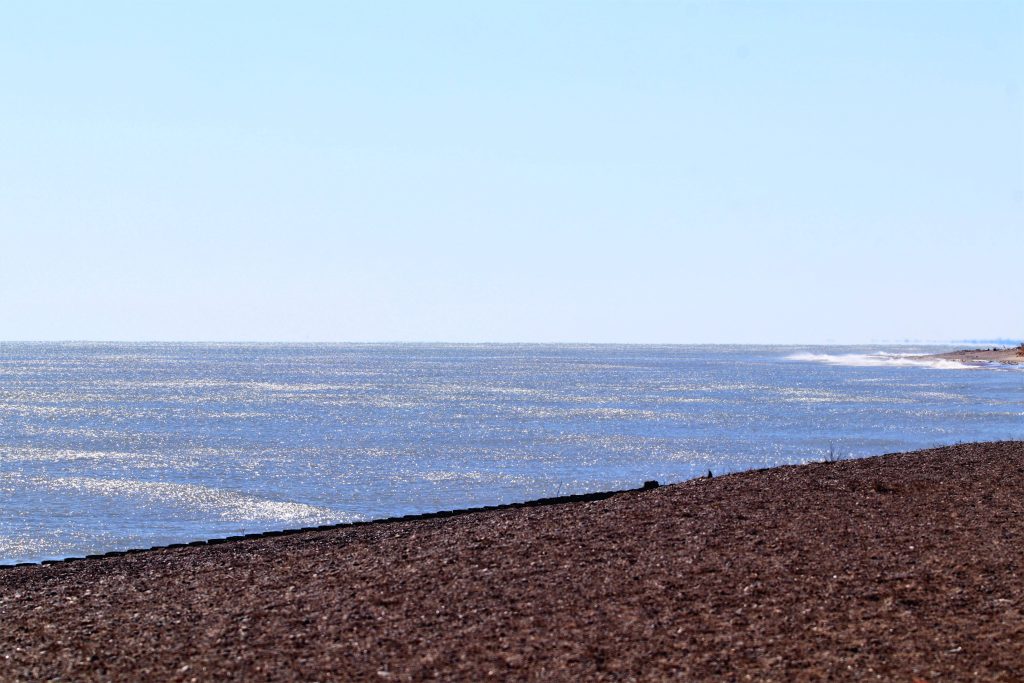
PHOTO: THOMAS CORRAO
However, one’s position within Kenosha can also affect the likelihood of seeing the Chicago skyline. The further south a person is in Kenosha, the better their chances of catching a glimpse of the skyline. This is because the curvature of the Earth causes the line of sight to be more angled upward the further north a person is located.
Therefore, someone who is in the northern part of Kenosha may have a more difficult time seeing the skyline compared to someone who is in the southern part of Kenosha.
Additionally, atmospheric conditions such as wind direction and speed can affect visibility. If the wind is blowing from the north, it can push the haze and pollution away from Chicago, resulting in clearer air and better visibility. Conversely, if the wind is blowing from the south, it can carry haze and pollution toward Chicago, reducing visibility.
The time of day can also affect visibility.
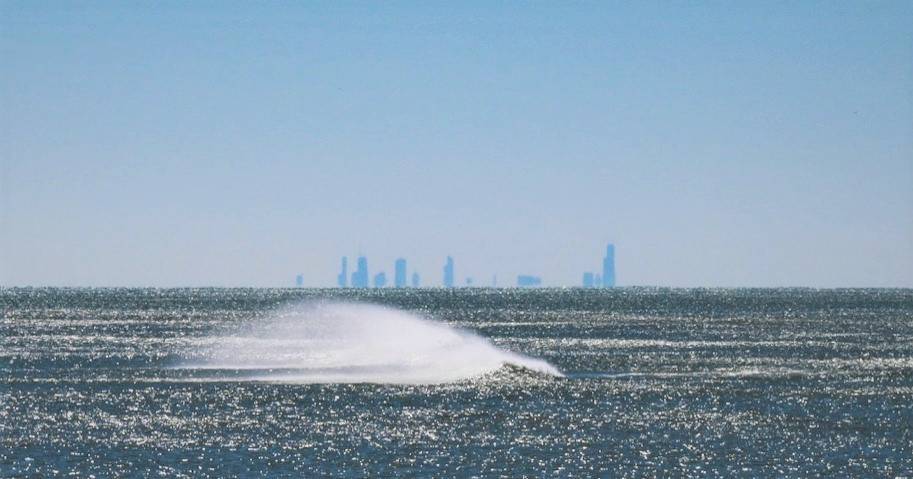
PHOTO: JIMMY JONES
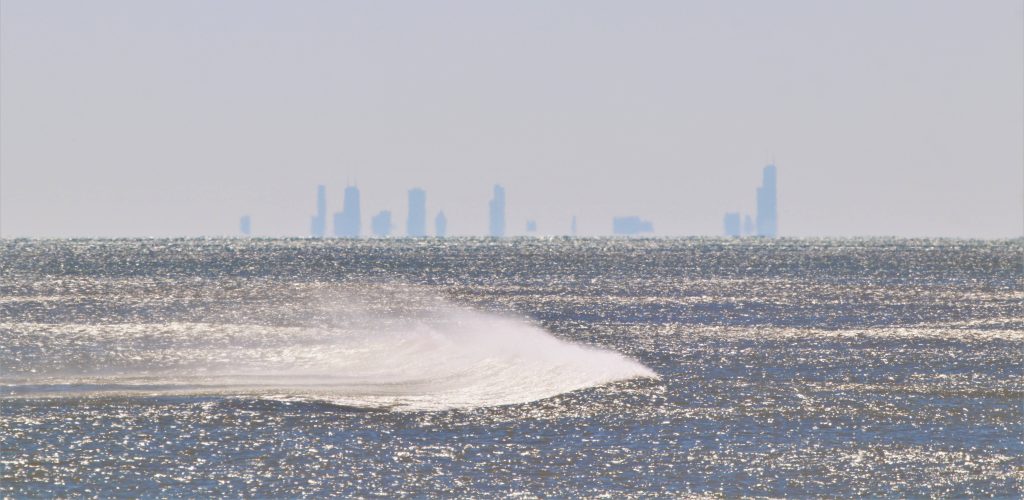
PHOTO: THOMAS CORRAO
The best time to view the Chicago skyline from Kenosha is during the morning or evening, when the sun is lower in the sky. This is because the light from the sun is less intense and less likely to be scattered by atmospheric particles. In contrast, viewing the skyline during the middle of the day when the sun is high in the sky can result in more atmospheric haze and reduced visibility.
Overall, the ability to see the tops of the buildings in the Chicago skyline from Kenosha on clear days is a fascinating natural phenomenon. By paying attention to your location within Kenosha, weather conditions, wind direction, and time of day, residents and visitors can increase their chances of seeing a clear view of the skyline.
So, the next time you’re in Kenosha on a clear day, be sure to look out over Lake Michigan and see if you can catch a glimpse of the famous Chicago skyline!
